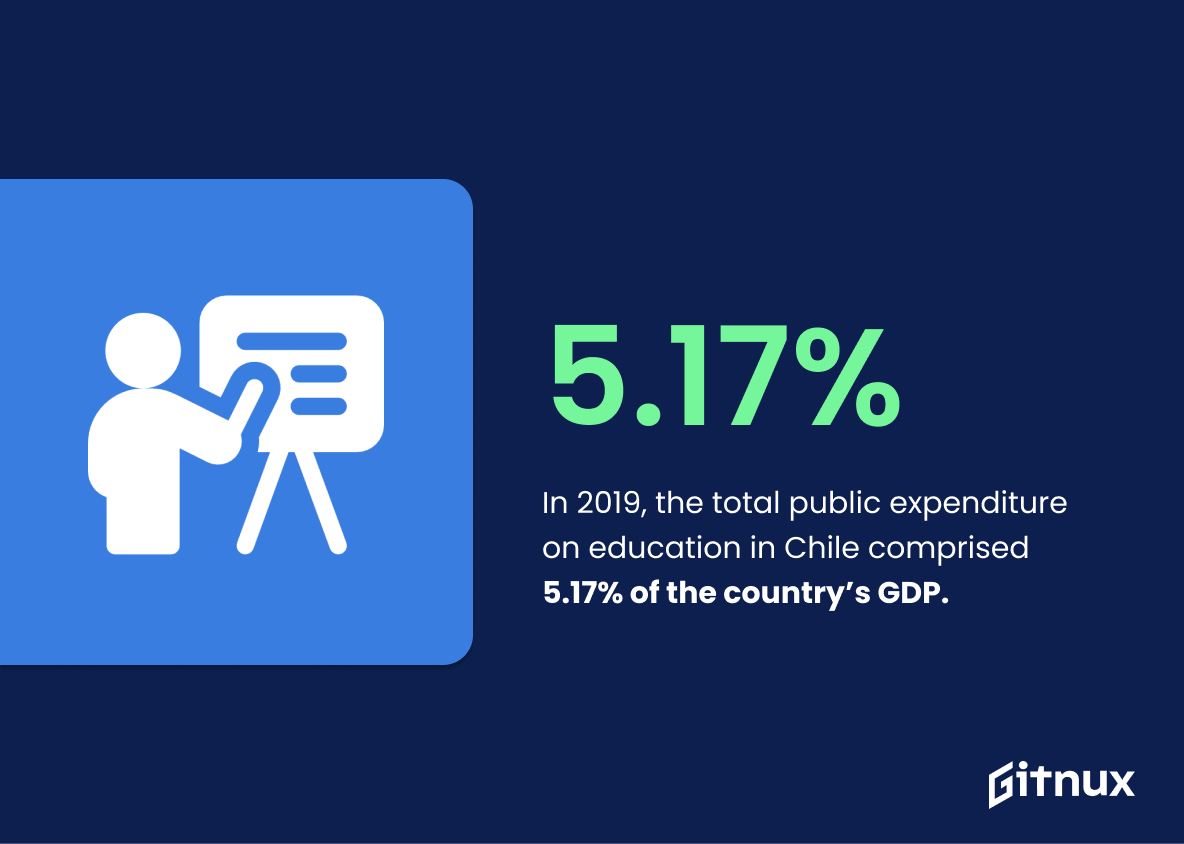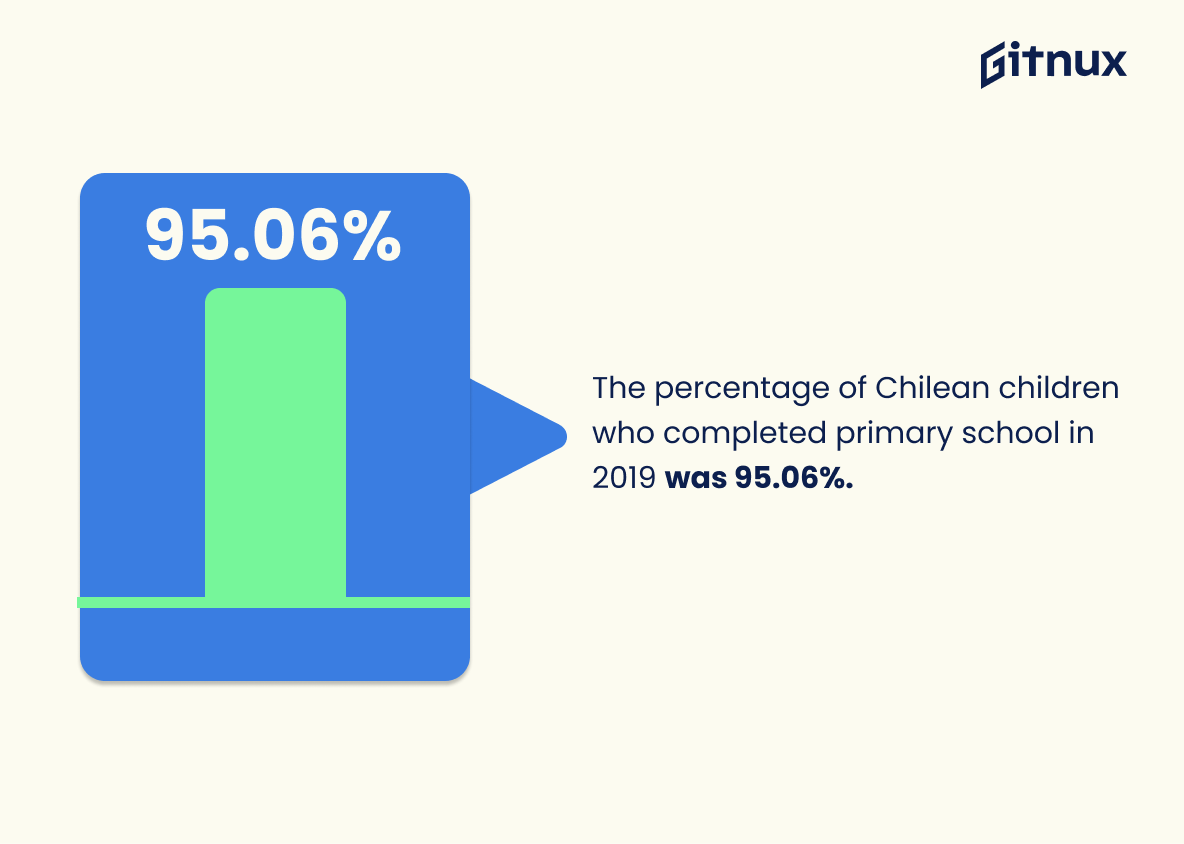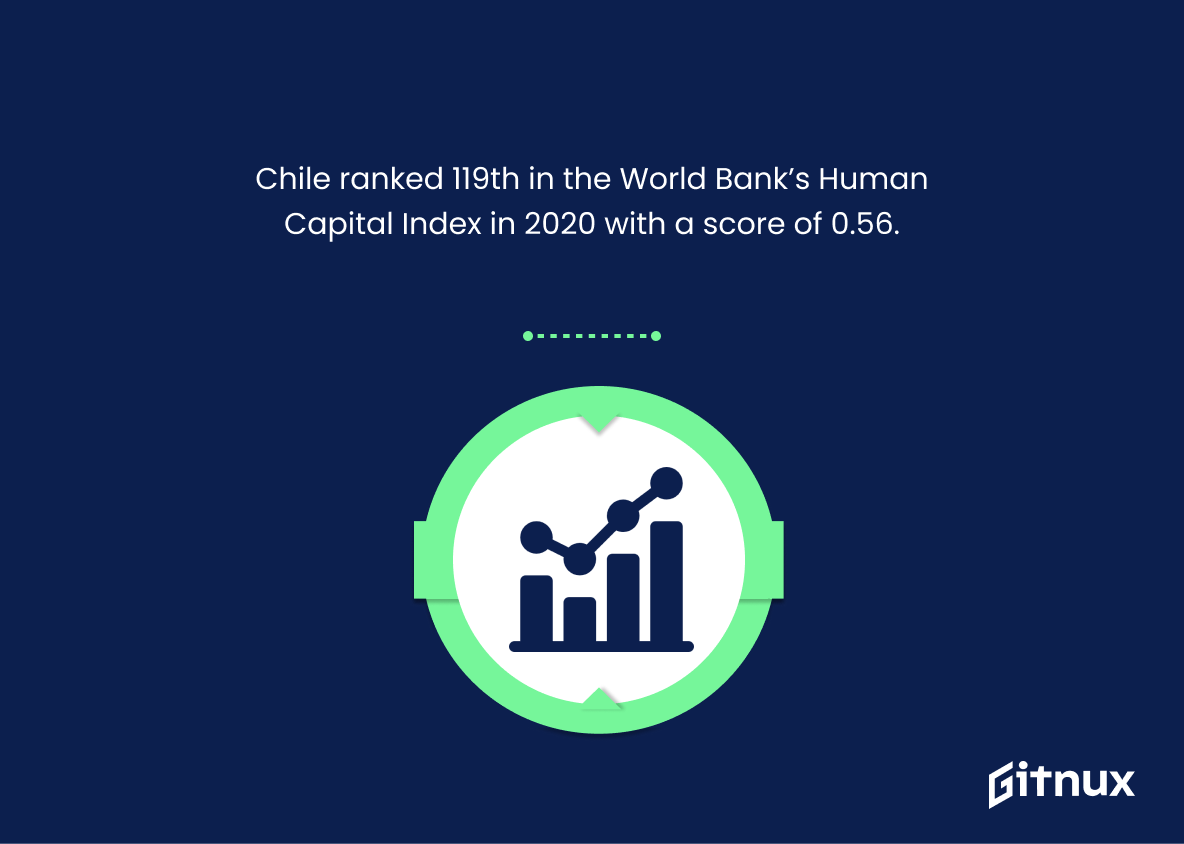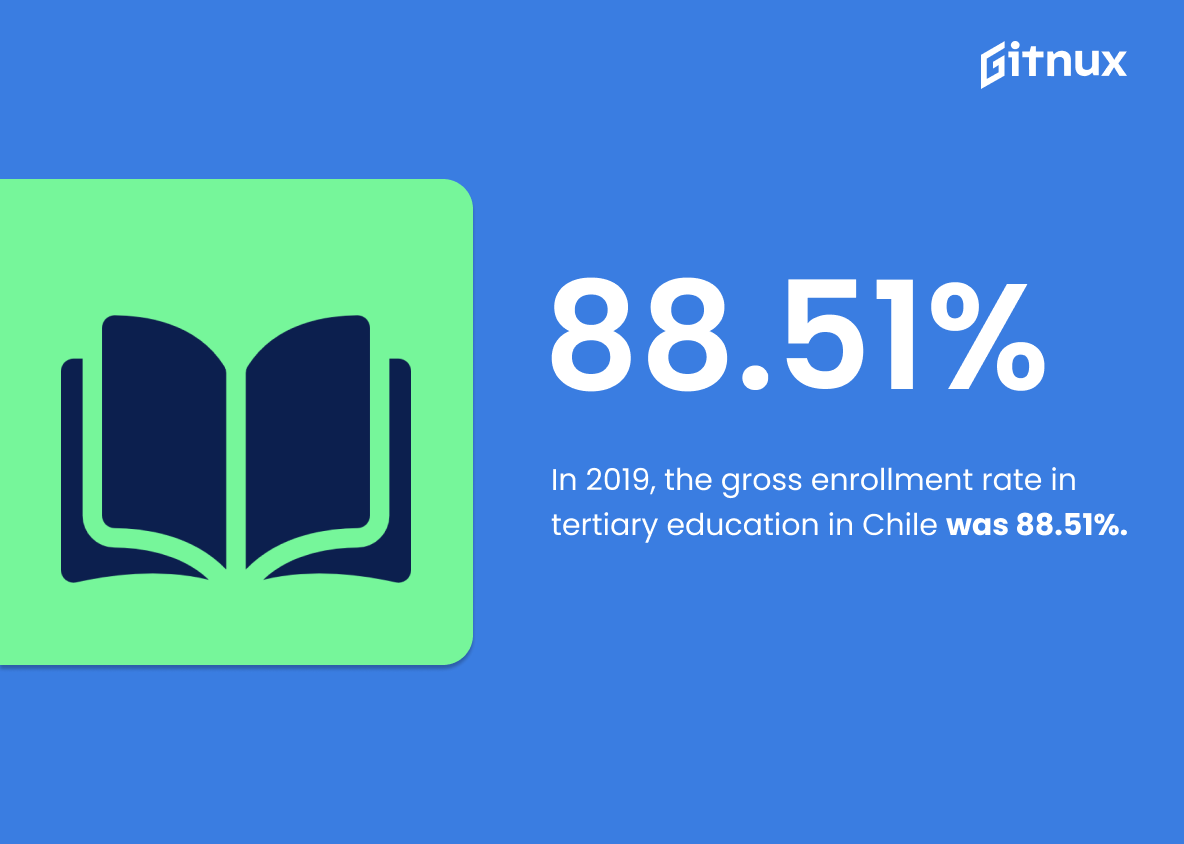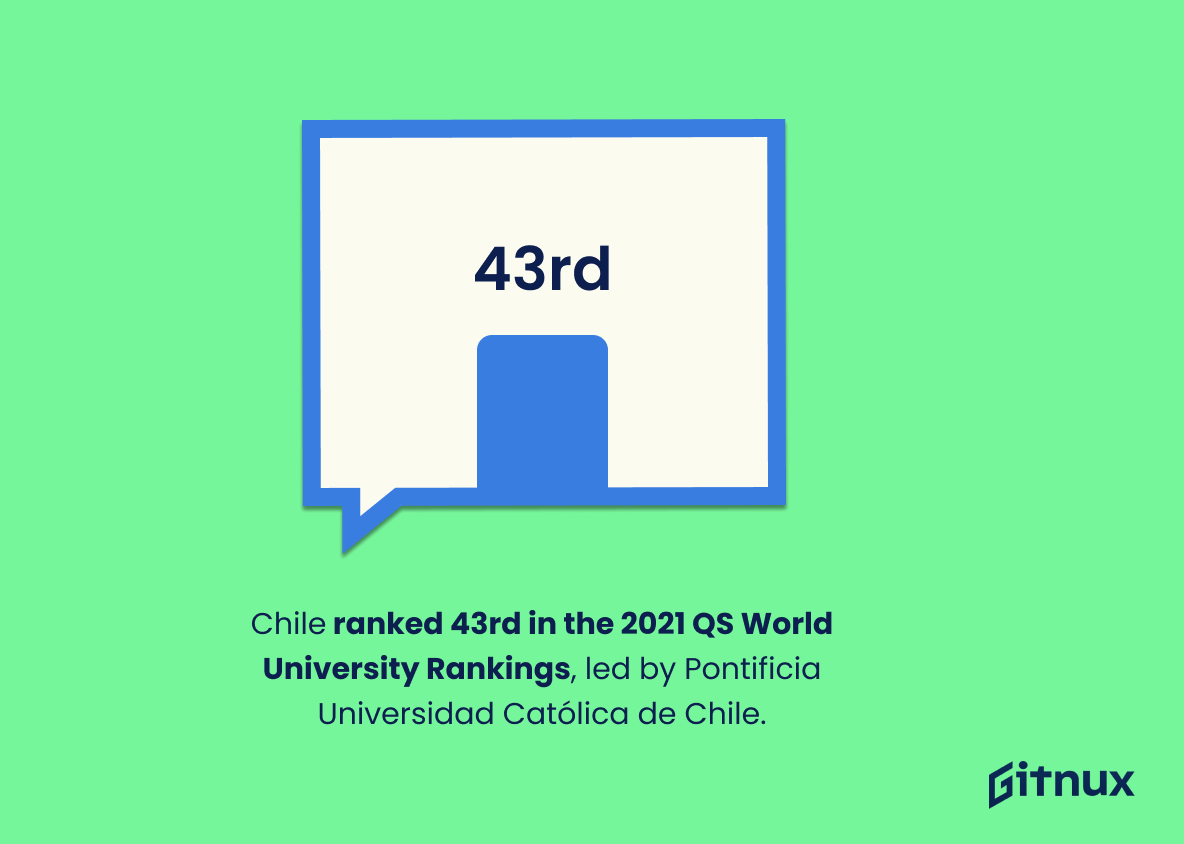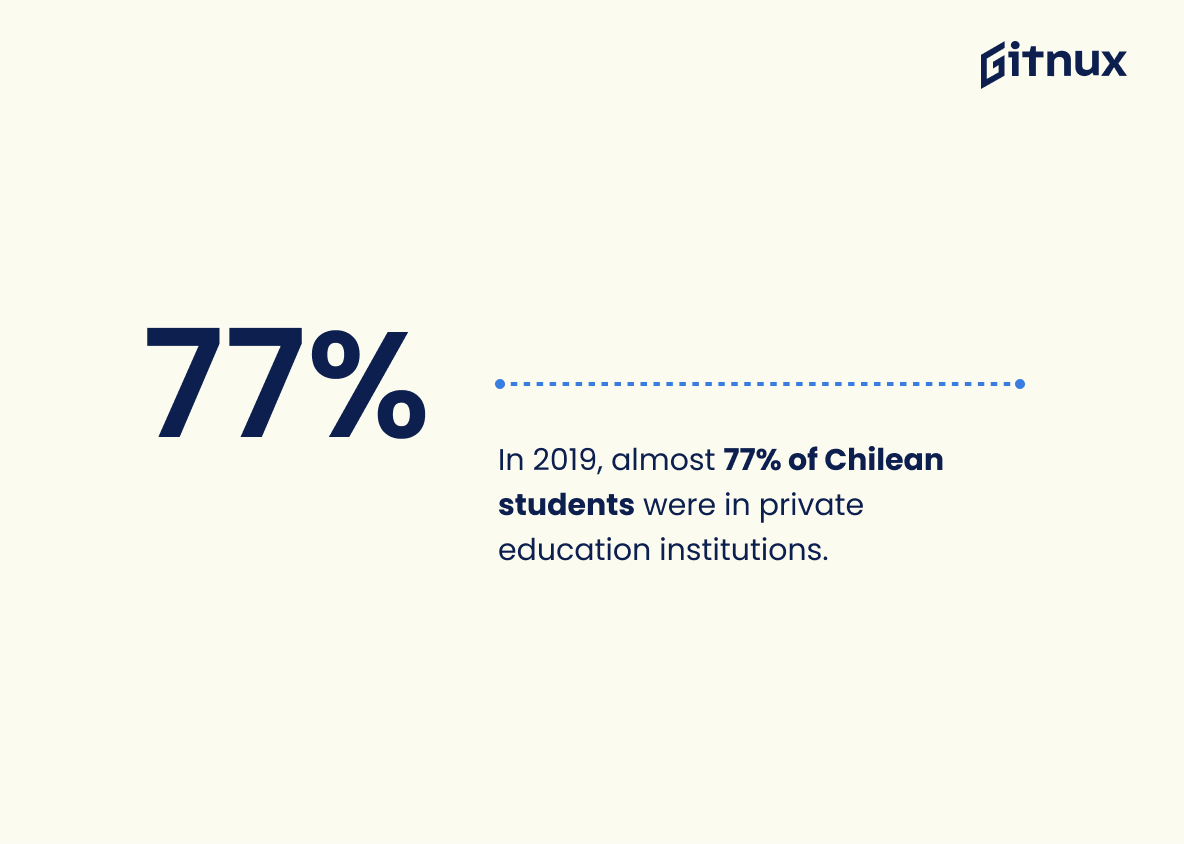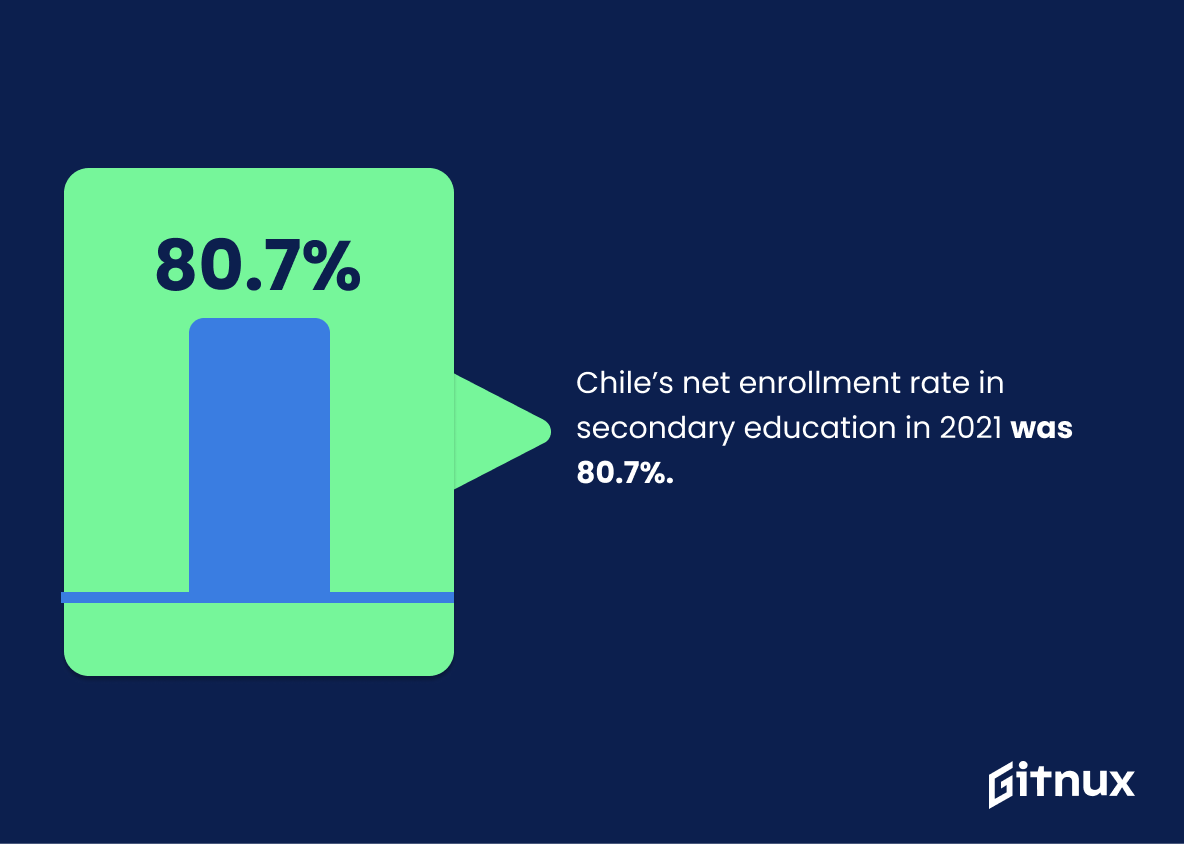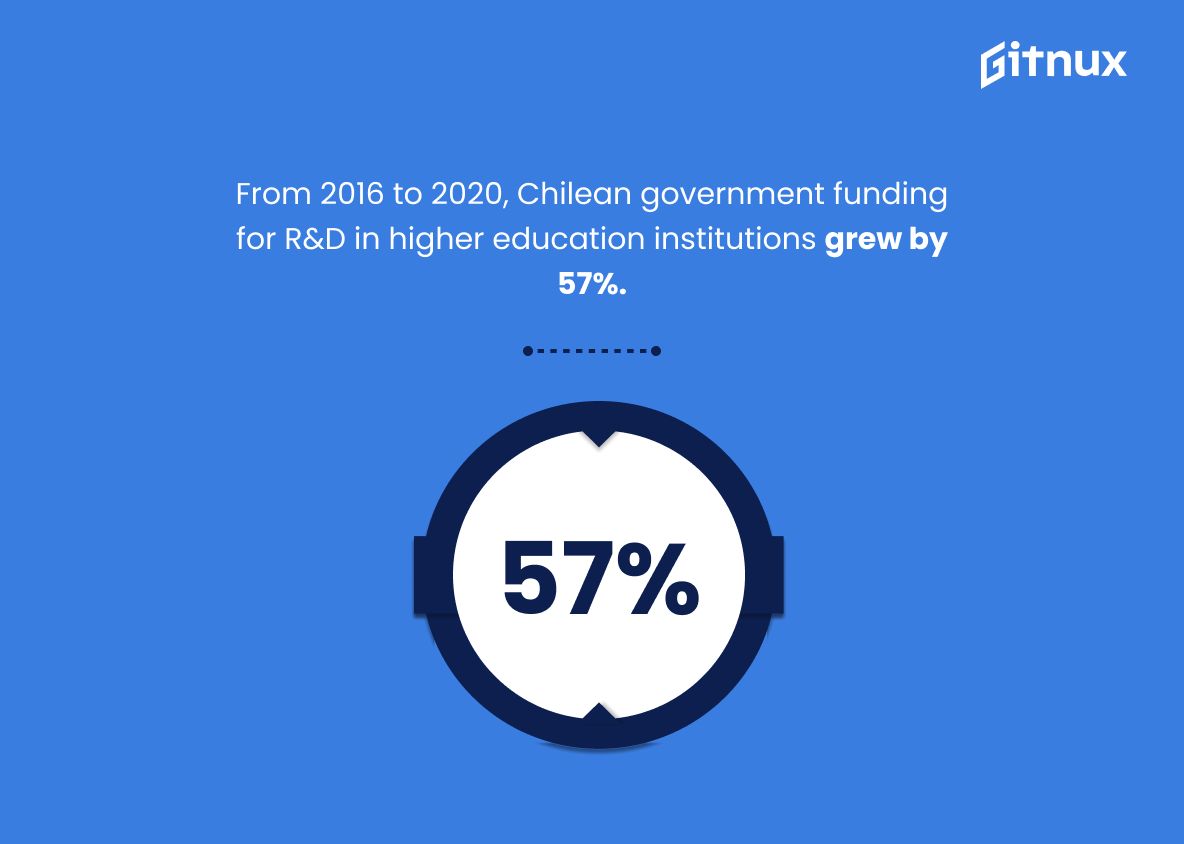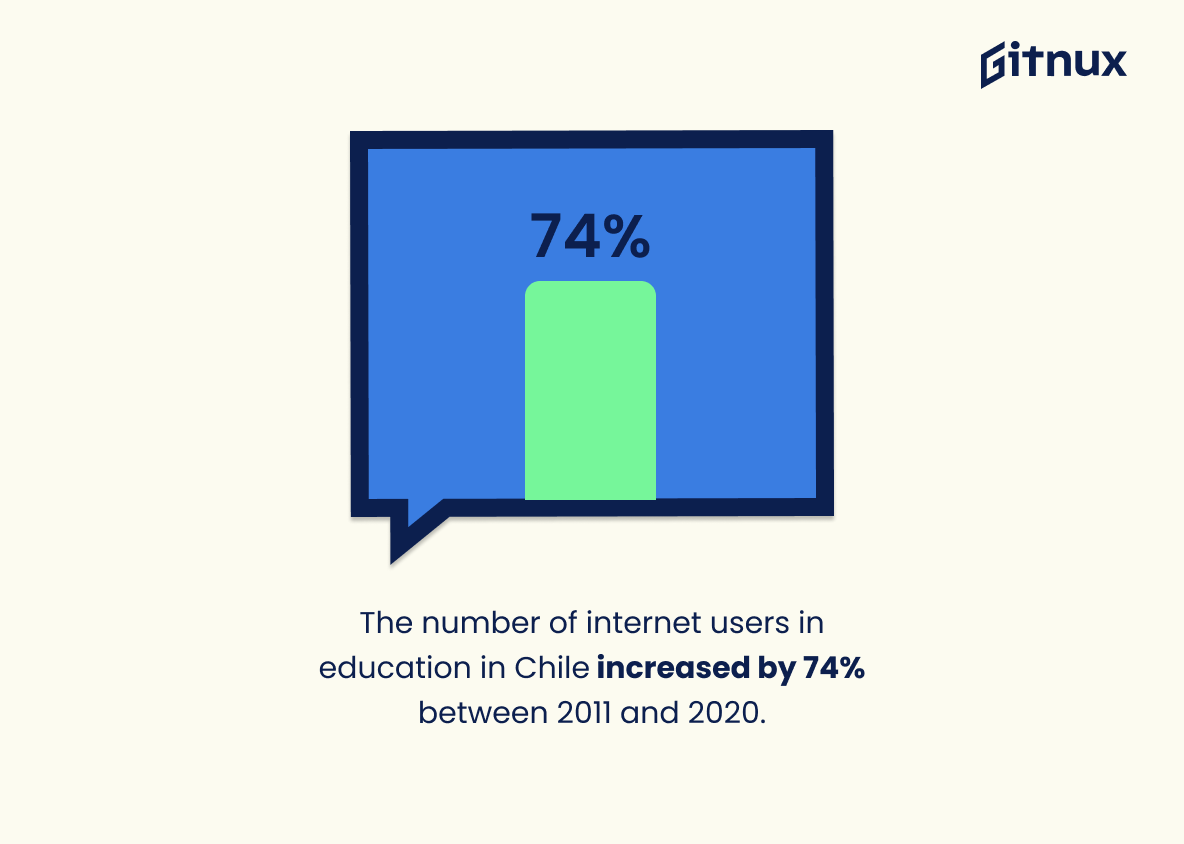Chile is a country with an impressive education system. According to the World Bank, in 2021 the gross enrollment rate in primary education was 99.28%, and Chile’s literacy rate for adults (15 and older) was 97.9%. In addition, Chile ranks 48th out of 180 countries in the 2022 World University Rankings, while its Program for International Student Assessment (PISA) test scores were 447 in reading, 417 in math, and 444 in science.
In 2019, total public expenditure on education comprised 5.17% of GDP; 1,517 868 Chilean children were enrolled at primary level; 95.06% completed their studies successfully; 69.3% of preschoolers aged between four and five years old attended educational programs; 6 618 public schools operated throughout 2020; 88 51 % had access to tertiary-level courses that year according to data from The World Bank Human Capital Index which ranked 119th globally with a score 0 56 ; 182 higher learning institutions existed by 2020 as well as 253 716 teachers working within them 77 % students studied at private establishments whereas net enrolment rate secondary school reached 80 7 % 2016–2020 period funding government research development R&D increased 57 percent highest amount spent percentage GDP among Latin American Caribbean nations dropout rates stood 1 10 lastly internet users 74 increase 2011–2020 Subtel figures show .
The statistic that in 2021, the gross enrollment rate in primary education in Chile was 99.28% is a testament to the country’s commitment to providing quality education to its citizens. This impressive figure is indicative of the progress Chile has made in ensuring that its citizens have access to the educational resources they need to succeed. This statistic is a powerful reminder of the importance of investing in education and the positive impact it can have on a nation’s future.
Chile’s literacy rate for adults (15 and older) in 2021 was 97.9%.
The impressive literacy rate of 97.9% for adults in Chile is a testament to the country’s commitment to education. It is a clear indication that the nation is making strides in providing quality education to its citizens, and that the educational system is succeeding in its mission to equip its people with the skills and knowledge they need to thrive.
Chile Education Statistics Overview
In 2019, the total public expenditure on education in Chile comprised 5.17% of the country’s GDP.
The fact that public expenditure on education in Chile accounted for 5.17% of the country’s GDP in 2019 is a telling statistic that speaks volumes about the importance of education in Chile. It shows that the government is willing to invest in the education of its citizens, which is essential for the country’s economic and social development. This statistic is a clear indication that Chile is committed to providing its citizens with the best possible education, and that it is taking the necessary steps to ensure that its citizens have access to quality education.
Chile’s Program for International Student Assessment (PISA) test scores in 2018 were 447 in reading, 417 in math, and 444 in science.
The 2018 Program for International Student Assessment (PISA) test scores for Chile demonstrate the country’s educational progress and potential. With a reading score of 447, a math score of 417, and a science score of 444, Chile’s students have shown that they are capable of achieving success in the classroom. This data is an important indicator of the quality of education in Chile and provides insight into the country’s educational system.
In 2019, 1,517,868 Chilean children were enrolled in primary education.
This statistic is a testament to the commitment of the Chilean government to providing quality education to its citizens. It shows that the country is making strides in ensuring that its children have access to the resources they need to succeed. It also serves as a reminder that education is a fundamental right that should be available to all, regardless of socio-economic status.
The percentage of Chilean children who completed primary school in 2019 was 95.06%.
This statistic is a testament to the success of Chile’s educational system, showing that the vast majority of children are able to complete primary school. It is a sign of progress and a positive indicator of the country’s commitment to providing quality education to its citizens.
Chile ranked 119th in the World Bank’s Human Capital Index in 2020 with a score of 0.56.
This statistic is a stark reminder of the state of education in Chile. With a score of 0.56, Chile ranks 119th in the World Bank’s Human Capital Index, indicating that the country is not investing enough in its education system to ensure that its citizens have the skills and knowledge they need to succeed in the modern world. This is a concerning statistic that should be addressed if Chile is to remain competitive in the global economy.
In 2019, the gross enrollment rate in tertiary education in Chile was 88.51%.
The impressive statistic of 88.51% gross enrollment rate in tertiary education in Chile in 2019 speaks volumes about the country’s commitment to education. It is a testament to the dedication of the Chilean government to ensure that its citizens have access to quality education and the opportunity to pursue higher education. This statistic is a powerful indicator of the progress Chile has made in the field of education and is a source of pride for the nation.
Chile ranked 43rd in the 2021 QS World University Rankings, with the highest-ranked university being the Pontificia Universidad Católica de Chile.
This statistic is a testament to the quality of education in Chile, with the Pontificia Universidad Católica de Chile ranking 43rd in the 2021 QS World University Rankings. It is a clear indication that Chile is producing world-class universities and providing its students with the opportunity to gain a top-tier education. This is an important factor in the overall success of the country’s educational system and a testament to the hard work and dedication of its educators.
In 2019, almost 77% of Chilean students were in private education institutions.
This statistic is a telling indication of the state of education in Chile. It reveals that the majority of students are enrolled in private institutions, suggesting that public education is not meeting the needs of the population. This could be due to a lack of resources, inadequate infrastructure, or other factors. It is an important statistic to consider when discussing the state of education in Chile.
Chile’s net enrollment rate in secondary education in 2021 was 80.7%.
The net enrollment rate in secondary education in Chile in 2021 is a telling statistic that speaks volumes about the country’s commitment to education. It shows that Chile is making strides in providing access to secondary education for its citizens, and that the country is taking steps to ensure that its citizens have the opportunity to receive a quality education. This statistic is a testament to the progress Chile has made in its educational system, and it is a sign of hope for the future of education in the country.
From 2016 to 2020, funding from the Chilean government for research and development (R&D) in higher education institutions increased by 57%.
This statistic is a testament to the Chilean government’s commitment to investing in higher education institutions and their research and development. It highlights the importance of R&D in higher education and the positive impact it can have on the country’s economy and society. It also shows that the Chilean government is taking steps to ensure that its higher education institutions are well-equipped to meet the needs of its citizens.
The dropout rate in primary schools in Chile was 1.1% in 2019.
The low dropout rate in primary schools in Chile in 2019 is a testament to the country’s commitment to providing quality education to its citizens. It is a sign that the educational system in Chile is working and that students are receiving the support they need to stay in school and succeed. This statistic is a positive indicator of the progress Chile has made in its educational system and is an important part of the overall picture of Chile’s educational statistics.
The number of internet users in education in Chile increased by 74% between 2011 and 2020.
This statistic is a testament to the progress Chile has made in terms of educational access and technology. It shows that the country has made significant strides in providing its citizens with the tools and resources they need to succeed in the digital age. By increasing internet access in education, Chile has opened up a world of possibilities for its students, allowing them to access a wealth of knowledge and resources that can help them reach their full potential.
Conclusion
Chile has made significant progress in the field of education over the past decade. The country’s gross enrollment rate in primary and secondary education is high, with 99.28% and 80.7%, respectively, while its literacy rate for adults (15+) stands at 97.9%. Chile also ranks highly on international university rankings such as QS World University Rankings 2021 where it placed 43rd out of 180 countries surveyed. Additionally, public expenditure on education comprises 5.17% of GDP which is higher than most Latin American countries; this investment has resulted in a 95% completion rate for primary school students and an increase in internet users by 74%. Furthermore, Chilean students have performed well on PISA tests with scores above 400 across all three subjects: reading (447), math (417) and science (444). With these impressive statistics combined with increased government funding towards research & development initiatives within higher educational institutions (+57%), there can be no doubt that Chile continues to make strides forward when it comes to providing quality education opportunities for its citizens
References
0. – https://www.www.topuniversities.com
1. – https://www.www.cia.gov
2. – https://www.www.subtel.gob.cl
3. – https://www.www.forbes.com
4. – https://www.data.worldbank.org
5. – https://www.gpseducation.oecd.org
